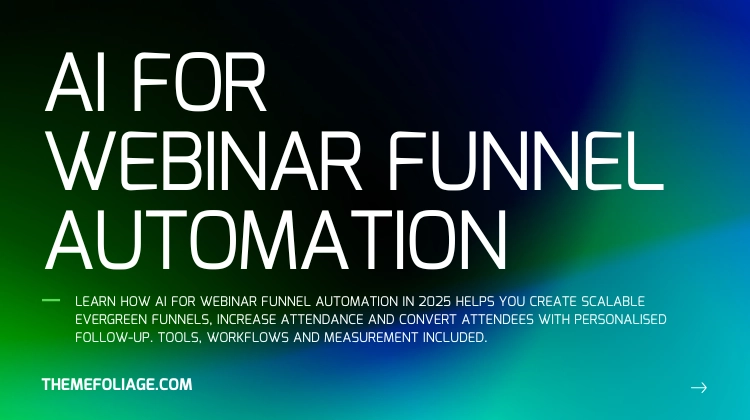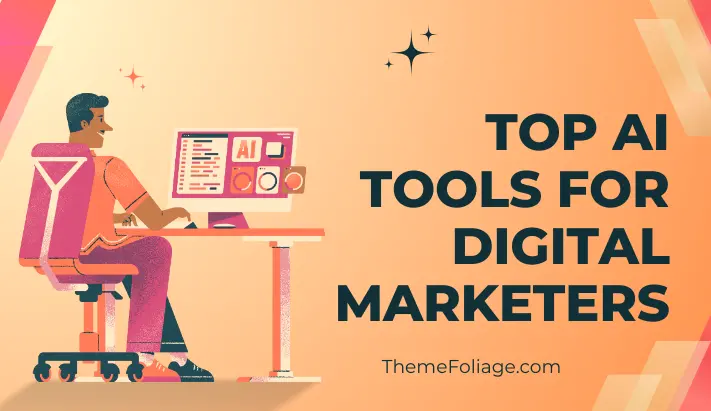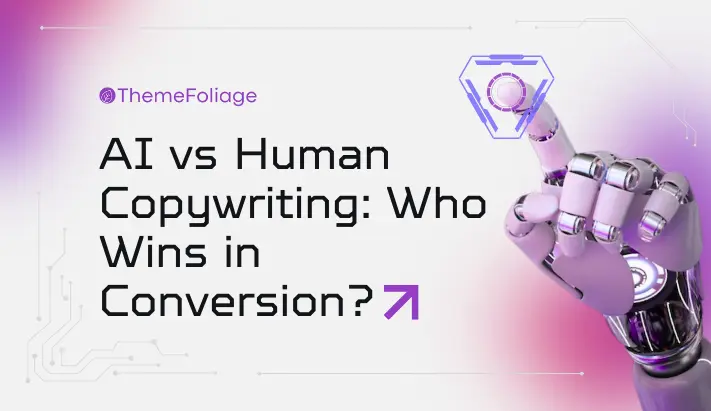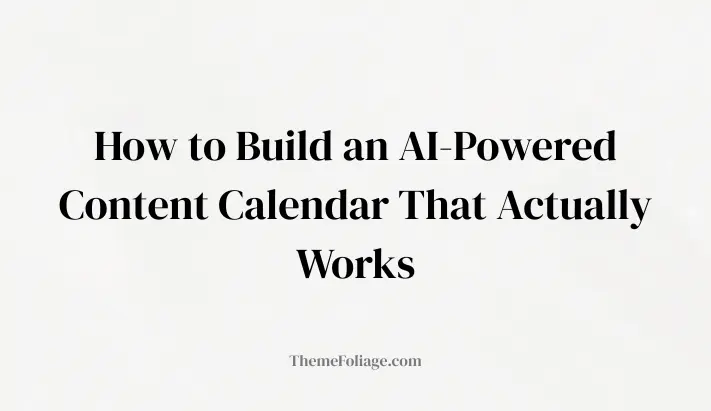Webinars remain one of the highest-converting content formats for product demos, courses and high-ticket offers. In 2025, the big win is no longer running more live events, it’s automating the entire webinar funnel with AI so you can convert consistently, 24/7.
AI shortens production, simulates live engagement, optimises schedules and personalises follow-up to maximise revenue from each registrant.
This guide walks through why automated webinar funnels work today, AI capabilities that power them, recommended tools (note: prices may change), a practical implementation roadmap, measurement framework and common pitfalls with fixes you can apply immediately.
Why Automated Webinar Funnels Work Better Than Live-Only Models
- Scale without extra labour: record once, convert forever across time zones.
- Consistent delivery: the same best-practice presentation repeats without human error.
- Higher availability: on-demand and scheduled evergreen sessions fit global schedules.
- Better data: automated funnels capture micro-signals attendance duration, question clicks, slide engagement that feed AI models.
- Optimised follow-up: AI personalises email and ad retargeting based on real attendee behaviour, increasing downstream conversions.
When combined with AI, automated webinar funnels not only replicate live benefits but add continuous optimisation and personalisation that human hosts can’t match at scale.
Core AI Capabilities for Webinar Funnels
- Script and Slide Generation
AI converts outlines into polished webinar scripts, slide decks and speaker notes in minutes, preserving persuasive frameworks and CTAs. - AI Video Production and Voice
Text-to-speech and generative-video tools create polished presenter videos and captions, enabling face‑on or voice‑narrated evergreen webinars without repeated recordings. - Simulated Live Experience
AI adds live-like elements, chat simulators, timed polls, dynamic countdowns and “recent attendees” activity to increase attendance and perceived urgency. - Audience Prediction and Scheduling
Models predict optimal session times per timezone and channel, and suggest an evergreen schedule that maximises show-up rates for international audiences. - Engagement Scoring and Segmentation
AI scores attendees by attention (watch time, interaction points) and intent signals to create high-value segments for follow-up. - Automated Personalised Follow-Up
Sequence generation tools craft tailored email, SMS and ad retargeting flows based on segment, behaviours and predicted conversion propensity. - Performance Optimisation
Bandit testing and reinforced learning iterate on hooks, CTAs, thumbnails and session timing to maximise registrations and conversions. - Attribution and LTV Forecasting
Predictive models forecast deal probability and customer lifetime value per attendee, enabling profit-first decisions in nurturing and paid scaling.
Recommended Tool Categories and Examples (prices may change)
- Script & slide AI: generative copy tools and slide creators
- Video production & voice: AI video studios and neural TTS
- Webinar platforms (evergreen features): platforms that support on‑demand, simulive and engagement elements
- Scheduling & scarcity: deadline/evergreen scarcity engines and calendar integrations
- CDP / event stream: centralise webinar events for segmentation and retargeting
- Email/SMS automation: personalised sequence builders and predictive send-time tools
- Analytics & optimisation: bandit engines, attribution and LTV prediction
Pick vendors that expose webhooks and APIs so AI signals flow into your martech stack; verify up-to-date pricing and quotas before purchasing.
Practical Webinar Funnel Blueprint (step‑by‑step)
- Define the conversion objective
Choose a single KPI booked demo, sale, course enrolment and the primary offer and price point. - Create the master webinar content
Use AI to draft script and slides; record a high-quality master presentation or assemble a narrated video version. - Design evergreen delivery modes
Implement a mix of on‑demand, simulive (scheduled playback with live chat windows) and timezone-aware sessions to maximise global reach. - Add live‑like engagement
Simulate social proof (recent registrants, live‑chat responses), embed polls and use timed CTA overlays to mimic the live momentum. - Instrument event tracking
Stream all events—registration, join, watch duration, poll answers, clicked CTAs—into your CDP and attribution system. - Train engagement and intent models
Use historical and early funnel signals to predict show‑up probability and purchase propensity. - Personalise follow‑up at scale
Build conditional sequences: high-attention viewers receive immediate sales outreach and bonus offers; low-attention viewers get a condensed highlight reel plus soft nurture. - Run continuous optimisation
Apply multivariate/bandit testing to thumbnails, subject lines, hooks and session times; feed results back into AI models. - Scale with paid and organic channels
Use lookalikes seeded from high-intent attendees to scale paid traffic; repurpose webinar highlights as short ads and content. - Measure incrementality
Use holdouts and control groups to measure how much revenue the automated webinar funnel truly adds versus other channels.
Measurement and KPI Framework
- Registration rate and show‑up rate (by source and session type)
- Watch time distribution and engagement score (polls, clicks)
- Conversion rate to primary KPI (demo booking, purchase) by attendee segment
- Revenue per registrant and predicted LTV uplift
- Cost per acquisition (CPA) and return on ad spend (ROAS) for paid traffic
- Incremental lift via A/B holdout tests (essential to prove causal impact)
- Model accuracy and drift metrics for intent scoring
Prioritise causal measurement (randomised holdouts) to avoid mistaking correlation for real funnel performance.
Common Pitfalls and How to Avoid Them
- Poor onboarding flow: make registration, calendar add and reminders frictionless with clear CTAs.
- Over-simulated chat that feels fake: keep simulated chat believable and augment with occasional real-time hosts when possible.
- One-size-fits-all follow-up: personalise follow-up based on engagement score to avoid wasting sales outreach.
- Ignoring timezones and language: schedule sessions and localise copy and CTAs for global markets.
- Bad attribution: ensure server-side tracking and reliable postback flows for correct crediting of conversions.
- Rushing automation without tests: always validate AI suggestions with holdouts before full-scale budget shifts.
Governance, Compliance and Ethics
- Respect consent for recordings and communications; store consent states per region.
- Avoid misleading scarcity; clearly disclose evergreen mechanics where legally required.
- Maintain transparent data retention and deletion policies for registrant data.
- Ensure AI-generated claims and guarantees are accurate and reviewed by humans before publishing.
Final Thoughts
AI for webinar funnel automation transforms webinars from occasional campaigns into evergreen revenue engines. Start with a single, high-value webinar: use AI to accelerate content production, simulate live engagement, predict attendee intent and personalise follow-up.
Measure incrementally with holdouts, iterate on what moves the needle, and scale the winning funnel across channels and languages.
An AI-powered webinar funnel converts better because it learns from every session optimising content, timing and outreach, so your message reaches the right people, at the right moment, anywhere in the world.



